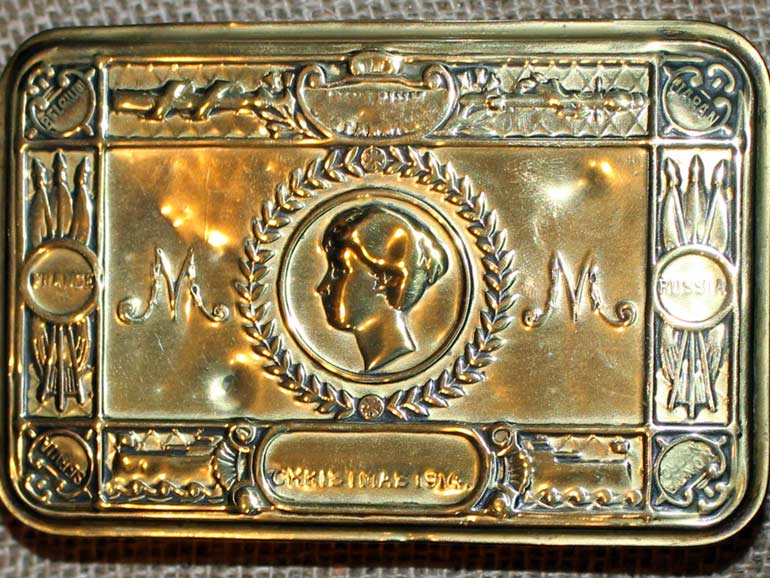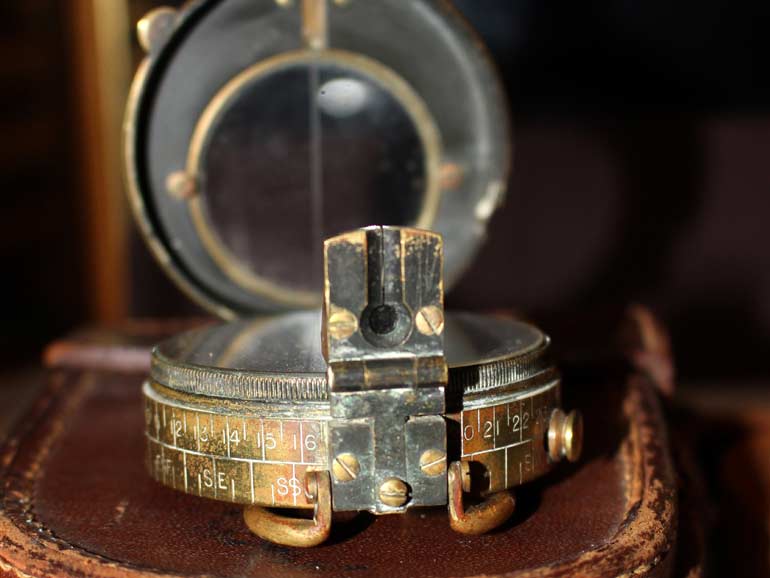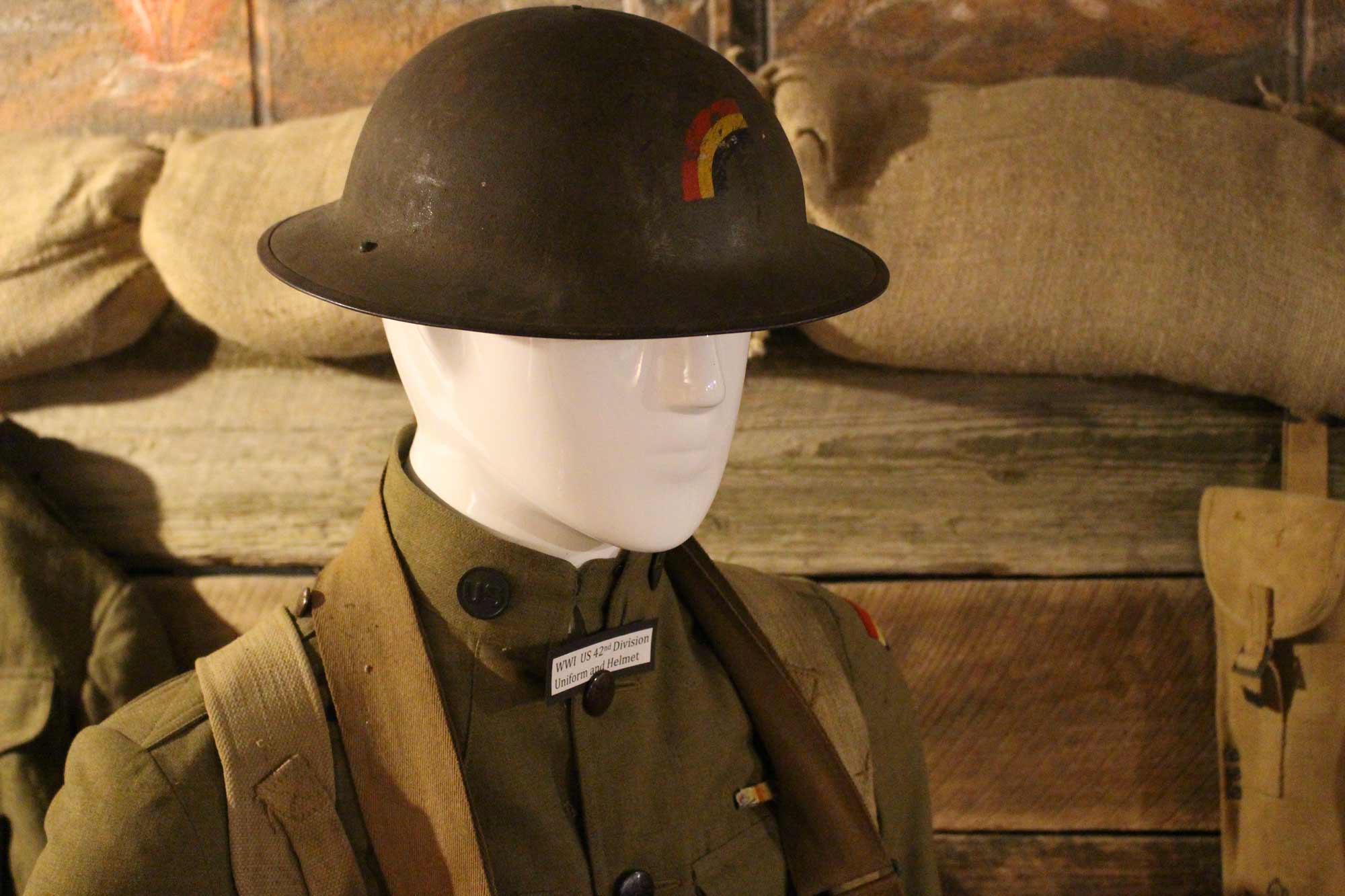WWI Exhibit
This exhibit of weaponry, uniforms and equipment is taken from the period 1914-1918. The gallery is highlighted by a reproduction of a WWI trench complete with an authentically uniformed Doughboy from the 42nd Division. There is also an exhibit of a British soldier complete with period photographs.



WWI
The trenches
They are the most enduring image of what was called The Great War. Vast networks of deep, fortified ditches and barbed wire snaking across the front lines.
The trenches were where millions of troops sheltered from rapid fire artillery barrages, machine gun fire, and air attacks. Where obsolete battle tactics slammed up against the industrial age’s new methods of killing. Where officers marched their men headlong into the fire of machine guns, tanks, flamethrowers, poison gas, and grenades. Where the no-man’s-land between combatants became a massive graveyard.
On July 28, 1914, and his wife were assassinated by a Serbian nationalist. A complex system of European alliances, combined with nationalistic fervor, set off a chain of events that started the First World War. Although there was sympathy in the U.S. for the United Kingdom, France and the other Allies, staggering casualty counts made Americans reluctant to do more than provide supplies and equipment.
WWI was the first modern war.
Advances in technology baffled military strategists and led to previously unimaginable casualty rates. One example was Germany’s Maxim MG-08 machine gun. Nicknamed the “Devil’s Paintbrush” by Allied troops, it had a firing rate of up to 500 rounds per minute. Weapons like this made it extremely dangerous to raise one’s head to view the terrain. The invention of the trench periscope in 1915 enabled troops to pinpoint the enemy’s location for artillery bombardment and sniper fire.
US finally enters the war
After watching the carnage from the sidelines for almost three years, new circumstances led the US to finally enter the war. First, Germany resumed unrestricted submarine attacks on Atlantic shipping. Then, British intelligence intercepted German proposals to Mexico, offering territory in the southwest U.S. in exchange for their support. By April 1917, when President Wilson called for the U.S. to join what he called “the war to end all wars,” even isolationist politicians supported him.
Summer of 1918, 10,000 American soldiers arrive every day
By the summer of 1918, 10,000 American soldiers were arriving in Europe every day. They brought with them their own military innovations, like the Winchester 1987 trench gun. The rifle’s pump-action produced rapid fire in the close confines of the trenches, earning it the moniker: the trench sweeper.
Soldiers alleviated boredom in WWI trenches by creating trench art.
The fighting in the trenches was not constant, however. Pauses in battle could last weeks, even months. Soldiers alleviated boredom by creating trench art. Small pieces like knives, letter openers, and jewelry were made from spent shell casings. Amidst the inhumanity of war, soldiers created objects of beauty from the detritus of the battlefield to remind themselves of their own humanity.
But the fighting would always start again. To escape the chaos and brutality, some soldiers shot themselves to get pulled from the front lines. General Pershing decreed anyone who did so must wear a yellow SIW armband, for self-inflicted wound. It was the soldier’s badge of cowardice. But were they cowards, or just young men pushed to their limit by the futility and savagery war?
America’s economic and military contribution to the war turned out to be indispensable to the Allies.
On November 11, 1918, Germany signs armistice with allies ending WWI
On November 11, 1918, Germany had no choice other than to sign an armistice with the Allies. Finally, the guns were silenced and the trenches abandoned on the Western Front.
Four years of horrific combat and the loss of nearly 10 million lives – a generation of young men. The United States lost more than 50,000 men, including a third of the country’s pilots.
Sadly, the Great War was not the “war to end all wars,” and the terms of the armistice paved the way to another world war only a generation later.
After experiencing war through these videos, we feel grief, respect, admiration, and gratefulness for those who gave all, for those who came through so changed (or damaged), and for those who loved and love them. The best we can do is to listen to their stories. To try to see through their eyes and understand what they sacrificed. This is how we honor their courage and love of our country.
